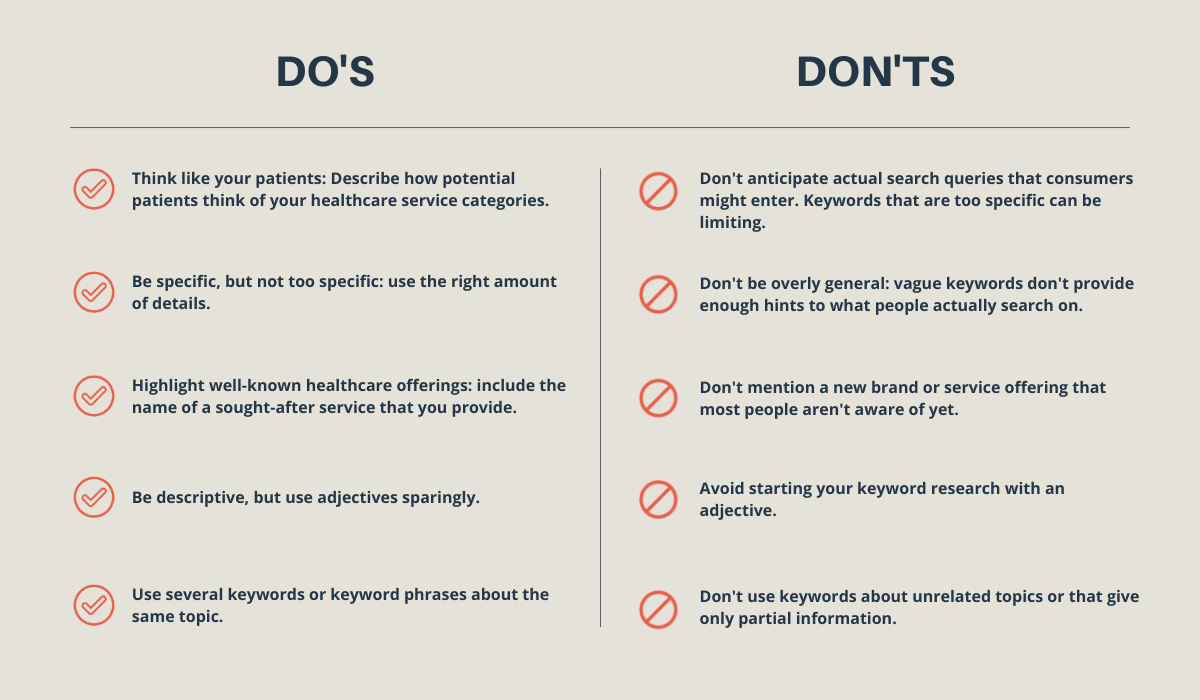Customer centricity, brand transparency, and digital transformation aren’t just buzzwords: they’re the very lifeforce of brands seeking to deepen customer relationships and expand on new growth opportunities—especially in the healthcare industry.
With the shift to remote and digital accelerating at full speed, today’s consumers have more ways to interact with healthcare brands than ever before. And the stakes are high: 82% of consumers say they’re likely to do business with brands that have a trusted image, according to Accenture research.
The secret to cutting through the noise and making a lasting first impression that drives bottom-line results? Getting the right content in front of the right audience at the right time—which starts knowing and understanding your customer to the fullest extent.
Here are three ways you can ramp up your upper-funnel healthcare marketing strategy and cultivate more meaningful, patient-centric relationships through your brand:
1. Boost customer engagement and conversions through audience segmentation
There is no one-size-fits-all approach to healthcare marketing. Instead, your campaigns must be tailored to the needs of individual consumers.
Enter audience segmentation. Audience segmentation divides your campaign’s audience into different groups of users called segments. You can target different ads to each segment and then compare the results. To help you master audience segmentation, here are a few key concepts you need to know:
- Shift the focus from demographics to values
- Pivoting from segmenting based on what people look like to what they value creates a stronger link to customer behavior. The reason being: people’s values inform their feelings, and consequently, their actions. When your brand connects on a human level, people are more open to trusting your intentions and believing that their needs are truly being addressed. By leading with customer values, brands can ensure that the promises they make actually align to what their audiences care about most.
- Highly targeted campaigns will yield higher engagement
- Once you’ve collected values-based data, noted patterns in your target audience’s digital behavior, and identified their needs, you can tailor campaigns to appeal to specific audience segments. Although these targeted campaigns might receive fewer impressions, they will yield a higher engagement rate because they capture the interest of a highly specialized audience.
- Personalized, educational content is the key to success
- Audience segmentation allows you to share more accurate, educational, and highly specialized information with your target audience. For instance, if you provide a medical device that’s the most cost-effective ACL repair technology on the market, athletic and physically active patients will likely want to know about it. If you offer the most effective medication to treat cardiac arrhythmia, heart patients should hear about it.
2. Make your content work for you with strategic keyword research
Keyword research is essential to making the most of your content in both paid and organic search. Understanding the intent behind searches in your niche, developing a rigorous list of tracked keywords and goals around rankings, and exploring the competition are all part of your keyword research, whether you’re using tools like SEMrush or Ahrefs or a free option like Google Keyword Planner.
A strong keyword research strategy will help you:
- Discover new keywords: Find new keywords using words, phrases, websites, and categories related to your healthcare products or services. By finding the keywords that are most relevant to your organization, you’ll be able to optimize your campaigns as well as improve the content and on-page SEO of your website.
- Dig deeper into how your content can connect with audiences: Get insight into how often certain words are searched and how those searches have changed over time—including search volume trends, what types of results tend to show up in search, and what related keywords might also be appropriate for your content.
- Narrow your target: Narrow your results based on geographic location, language, and date ranges to help plan your upper funnel content promotion strategy. You can also access information like average monthly searches, competition level, organic impressions, ad impressions, suggested bids, and organic average position.
- Build your strategy: After refining your keyword search list, you can generate new content ideas or update existing content to align with the needs of your audience—and what they’re most interested in seeing from your brand.
Best practices for finding new keywords: Do’s and Don’ts

3. Understand the full impact of your upper-funnel marketing efforts
Video marketing reigns as one of the most effective strategies in today’s era. Why? For a start, YouTube is the second most popular website after Google, and viewers tend to retain 95% of a message from a video—opposed to 10% if reading it in text.
In fact, compelling video ads can help healthcare providers connect with new audiences across the globe and boost their digital presence.
With new engagement tools like Google Brand Lift, healthcare marketers can easily measure the direct impact that YouTube ads have on people’s perceptions and behaviors throughout their customer journey. It’s essential to understand how the upper funnel is impacting the metrics that matter most to your business: lifts in brand awareness, ad recall, consideration, favorability, purchase intent, and brand interest—as measured by organic search activity.
How do Brand Lift measurements work?
Brand Lift gathers feedback directly from consumers in real-world settings by measuring results in two different ways:
- Surveys: Measures the moments along the consumer journey, including brand awareness, ad recall, consideration, favorability, and purchase intent, by isolating a randomized control group that has not been shown your ad and an exposed group that has. About a day after seeing (or not seeing) your ad, a one-question survey is sent to both groups. Since the only effective difference between the two groups is whether they saw your ad, the survey results can accurately determine the lift attributed to your campaign.
- Search: Brand Lift can also measure the impact your campaign has on creating interest in your brand by using organic searches on both Google.com and YouTube. Similar to surveys, it randomly picks a group that saw your ad and a control group that didn’t see your ad—then compares the organic search behavior of both groups, looking at how often they search for keywords related to your brand or campaign. The difference in searches can be attributed to your campaign.
You can also go beyond traditional metrics like impressions and views to measure your campaign’s impact on perceptions and behaviors throughout the consumer journey (aka the halo effect of YouTube marketing), including:
- Ad Recall: Do people recall watching my video ad?
- Brand Awareness: Are my target consumers more aware of my brand after viewing my video ad?
- Brand Consideration: Did my video ad move people to consider my services? Are consumers more favorably aligned with my healthcare brand’s message/identity after viewing my ad?
- Likelihood of Conversion: Are consumers intending to convert after seeing my ad? Are people more interested in my services? Did my ad increase organic search activity for my service offerings?
If you’re ready to establish brand authority and drive the long-term performance of your healthcare brand, download Building Healthcare Consumer Trust with Awareness Marketing right now.







Responses